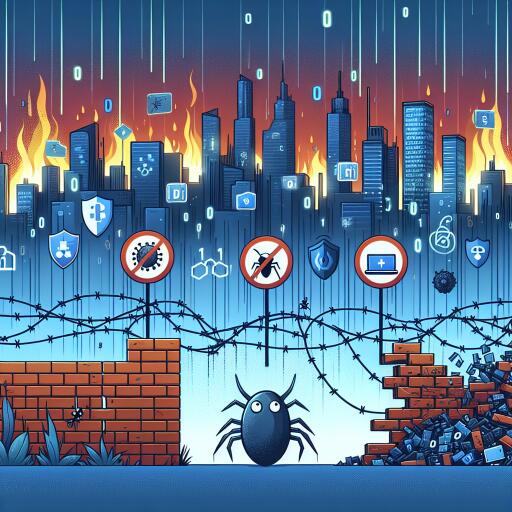In a significant cybersecurity failure that reverberated around the globe, CrowdStrike Holdings Inc. acknowledged a mistake in its update validation process that led to extensive outages, adversely affecting millions. This mistake, rooted in a quality assurance loophole, resulted in flawed data being deployed to customers, which in turn caused widespread disruptions last week.
The cybersecurity firm, in an effort to address rapidly evolving threats, rolled out an update for Windows systems. This update, however, contained a critical flaw that slipped through the company’s content validation system. Meant to scrutize and certify updates prior to their dissemination, this quality-assurance tool reportedly malfunctioned, allowing the problematic update to be released. CrowdStrike detailed these findings in an incident report published earlier in the week, which shed light on the events leading up to the calamitous incident.
The repercussions of the oversight were immediate and far-reaching, triggering a sequence of crashes across Windows platforms worldwide. The resultant chaos hampered operations for key industries across various nations—from airline and banking services in Australia and Japan to essential medical and emergency services in the UK and the US, respectively. With over 8.5 million Windows users impacted as per Microsoft’s reports, the incident has been marked as one of the most extensive IT failures in history.
In response to the debacle, both Microsoft and CrowdStrike swiftly deployed fixes to mitigate the disruptions. Efforts to recover affected systems are ongoing, with much success reported in restoration efforts. However, the episode left services hamstrung for several critical hours, exposing the vulnerabilities inherent in the modern IT infrastructure largely dependent on a select few technology stakeholders.
In the wake of the incident, CrowdStrike has committed to enhancing its rapid response content testing. A noteworthy corrective measure includes the implementation of “canary deployments,” a staggered update rollout strategy aimed at minimizing potential impacts by catching issues in smaller subsets before a wide-scale release. Furthermore, the company is in the throes of adjusting its content validator tool to prevent such oversights in the future, alongside providing clients with increased control over update deployments.
The move to refine update protocols has been recognized by industry professionals as a critical stride towards bolstering cybersecurity measures. Nathan Oliver, Chief Information Security Officer at Microminder Cyber Security, highlighted the importance of these initiatives in establishing more robust industry practices and mitigating future risks.
Nonetheless, the significant disruptions illuminate deep-seated concerns regarding the resilience of global IT frameworks reliant on major tech entities. The incident raised alarms about the potential for similarly catastrophic failures, emphasizing the need for comprehensive preventative strategies. Saif Abed, a cybersecurity and public health expert, voiced apprehensions over the sufficiency of the proposed fixes to guarantee against future incidents of a comparable magnitude.
The aftershock of the outage was starkly reflected in the financial standing of CrowdStrike, with the company’s shares plummeting nearly 30% and billions in market value erased. The incident has attracted the scrutiny of the U.S. House Committee on Homeland Security, which has summoned CEO George Kurtz to discuss measures to avert repetition. Shawn Henry, CrowdStrike’s Chief Security Officer, expressed contrition for the mishap in a LinkedIn post, acknowledging the depth of the breach in trust precipitated by the incident.
“The confidence we built in drips over the years was lost in buckets within hours, and it was a gut punch,” Henry admitted, underlining the gravity of the failure and the long road ahead in rebuilding user trust and enhancing cybersecurity methodologies to guard against future vulnerabilities.









